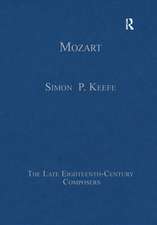Michael Tippett’s Fifth String Quartet: A Study in Vision and Revision
Autor Thomas Schuttenhelmen Limba Engleză Paperback – 30 iun 2020
| Toate formatele și edițiile | Preț | Express |
|---|---|---|
| Paperback (1) | 135.66 lei 43-57 zile | |
| Taylor & Francis – 30 iun 2020 | 135.66 lei 43-57 zile | |
| Hardback (1) | 418.97 lei 43-57 zile | |
| Taylor & Francis – 19 apr 2017 | 418.97 lei 43-57 zile |
Preț: 135.66 lei
Preț vechi: 166.93 lei
-19% Nou
Puncte Express: 203
Preț estimativ în valută:
25.96€ • 27.17$ • 21.61£
25.96€ • 27.17$ • 21.61£
Carte tipărită la comandă
Livrare economică 31 martie-14 aprilie
Preluare comenzi: 021 569.72.76
Specificații
ISBN-13: 9780367607395
ISBN-10: 0367607395
Pagini: 84
Dimensiuni: 138 x 216 mm
Greutate: 0.11 kg
Ediția:1
Editura: Taylor & Francis
Colecția Routledge
Locul publicării:Oxford, United Kingdom
ISBN-10: 0367607395
Pagini: 84
Dimensiuni: 138 x 216 mm
Greutate: 0.11 kg
Ediția:1
Editura: Taylor & Francis
Colecția Routledge
Locul publicării:Oxford, United Kingdom
Cuprins
1. Introduction; 2. Pre-conditions; 3. Creative cycles; 4. Transformation-notation; 5. Archetypes; 6. Dreamscapes; 7. From concept to composition; 8. Compositional peregrinations; 9. Interlude; 10. Second movement
Notă biografică
Thomas Schuttenhelm is a composer and guitarist working in a variety of media including music for the concert stage, theatre, dance, and performance art. His scholarly interests include: the history of the guitar, opera, and contemporary music performance practices and interpretation. He has published numerous books and articles including The Selected Letters of Michael Tippett and The Creative Development and the Compositional Process in the Orchestral Music of Michael Tippett. He was the recipient of a Fulbright Fellowship, and in 2008 he was made a British Music Studies Fellow at the Harry Ransom Center.
Descriere
Schuttenhelm provides a detailed account of the events leading up to and through the quartet’s compositional process, as well as a brief summary of its reception history. In addition to a comprehensive analysis of the entire quartet, the volume also takes into account Tippett’s preliminary attempts for the work and measures the significance its

















